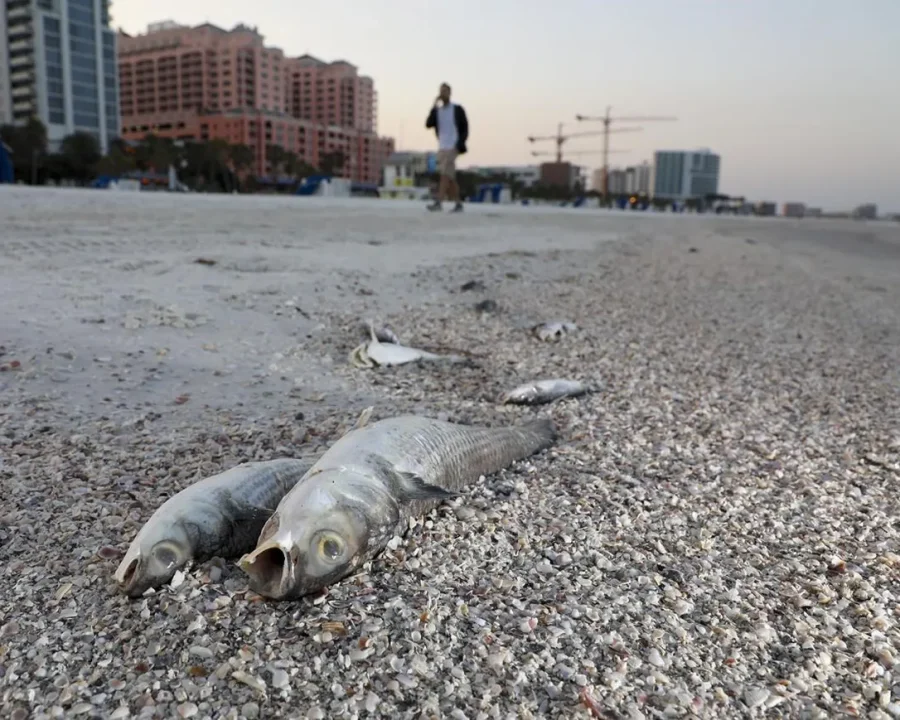Residents are complaining about burning eyes and breathing problems. Dead fish have washed up on beaches. A beachside festival has been canceled, even though it wasn’t scheduled for another month.
Florida’s southwest coast experienced a flare-up of the toxic red tide algae this week, setting off con-cerns that it could continue to stick around for a while. The current bloom started in October.
The annual Beach Fest in Indian Rocks Beach, Florida, sponsored by a homeowners’ association, was canceled after it determined, with help from the city and the Pinellas County Health Department, that red tide likely would continue through the middle of next month when the festival was scheduled.
“Red Tide is currently present on the beach and is forecasted to remain in the area in the weeks to come,” the Indian Rocks Beach Homeowners Asso-ciation said in a letter to the public. “It is unfortunate that it had to be canceled but it is the best decision in the interest of public health.”
Nearly two tons of debris, mainly dead fish, were cleared from Pinellas County beaches and brought to the landfill, county spokesperson Tony Fabrizio told the Tampa Bay Times. About 1,000 pounds (454 kilograms) of fish have been cleared from beaches in St. Pete Beach since the start of the month, Mandy Edmunds, a parks supervisor with the city, told the newspaper.
Red tide, a toxic algae bloom that occurs naturally in the Gulf of Mexico, is worsened by the presence of nutrients such as nitrogen in the water. The Florida Fish and Wildlife Conservation Commission warns people to not swim in or around red tide waters over the possibility of skin irritation, rashes and burning and sore eyes. People with asthma or lung disease should avoid beaches affected by the toxic algae.
The Florida Fish and Wildlife Conservation Commission on Friday reported that it had found red tide in 157 samples along Florida’s Gulf Coast, with the strongest concentrations along Pinellas and Sarasota counties.—APP










